Bosnia-Herzegovina << BOZ nee uh or BAWS nee uh, `hurt` suh goh VEE nuh or `hehrt` seh goh VEE nuh >> is a country in southeastern Europe. It is often simply called Bosnia. Sarajevo is the capital and largest city.
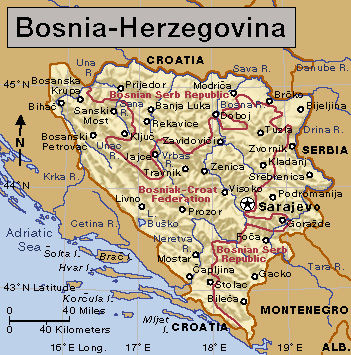
Slavic peoples make up most of Bosnia-Herzegovina’s population. The largest groups are the Bosniaks (sometimes called Bosnian Muslims), the Serbs, and the Croats. Conflicts among these groups have shaped the history of the region.
In 1918, Bosnia-Herzegovina became part of the Kingdom of the Serbs, Croats, and Slovenes, later renamed Yugoslavia. In 1946, Yugoslavia became a federal state consisting of six republics, one of which was Bosnia-Herzegovina. From 1945 to 1990, Communists controlled Yugoslavia. In 1990, Bosnia held its first free elections, and non-Communists won control of the legislature.
In March 1992, Bosnia declared its independence from Yugoslavia. Much of Bosnia’s Serbian population opposed independence, and war broke out. In December 1995, representatives of the opposing sides in the conflict signed a peace plan.
Government.
Under the terms of the peace plan of 1995, Bosnia-Herzegovina is divided into two parts. The plan awarded control of 51 percent of the country to a Bosniak-Croat federation and 49 percent to Bosnian Serbs. Each part has its own president and legislature.
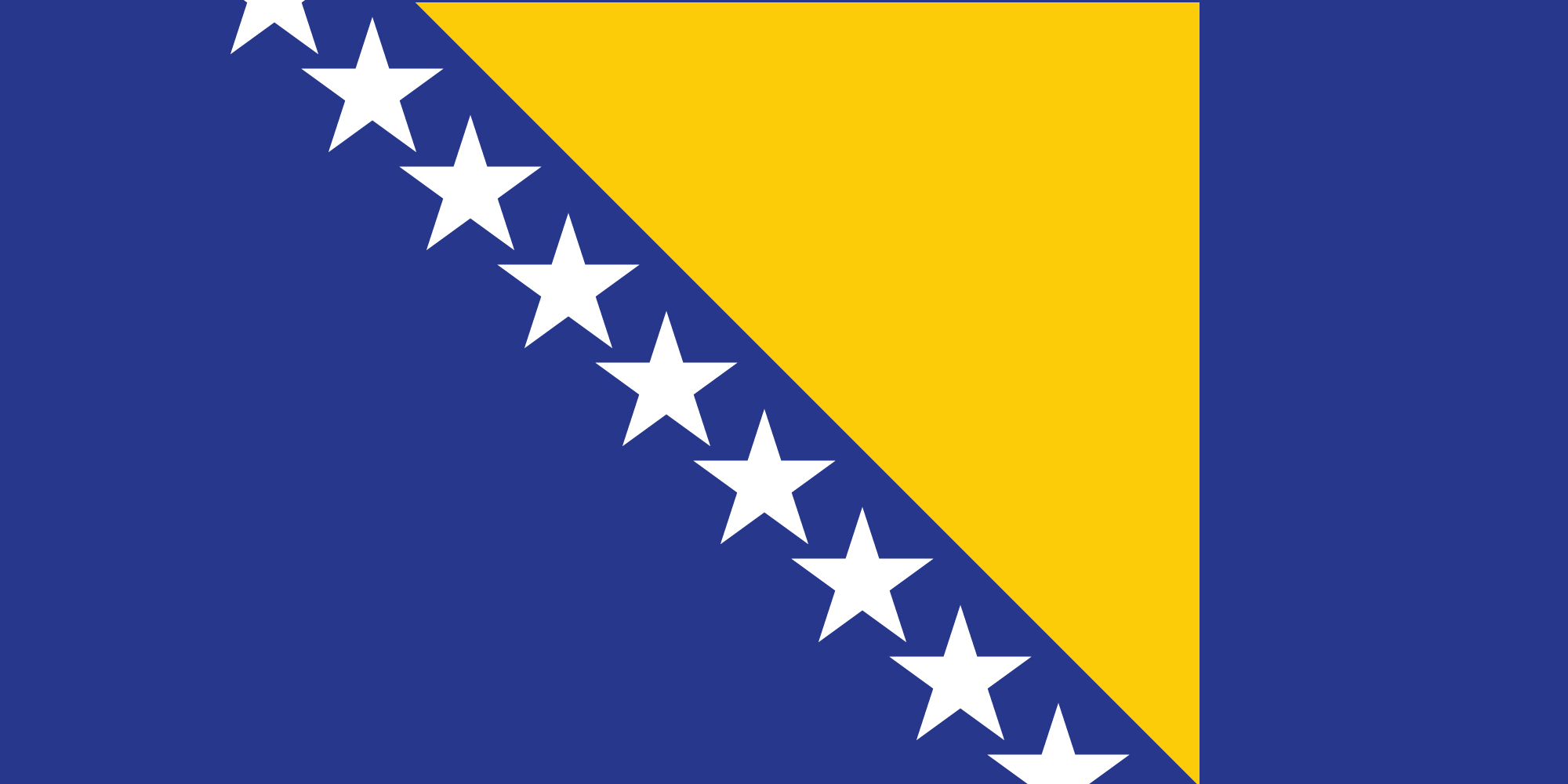
The national government consists of a three-member presidency, a council of ministers, and a legislature with two houses. The chairmanship of the presidency rotates every eight months among the three members, who are a Bosniak, a Croat, and a Serb. But in practice, the two regional governments hold the real power.
People.
Bosniaks make up the largest ethnic group. Serbs make up the second largest group, and Croats the third largest. Bosnia also has small numbers of Albanians, Roma (sometimes called Gypsies), and Ukrainians.
Loading the player...Bosnia-Herzegovina national anthem
Most of the people of Bosnia speak Bosnian, Croatian, or Serbian. In writing, Serbs traditionally employ a form of the Cyrillic alphabet, the system used in writing Russian and other Slavic languages. But Bosniaks, Croats, and others use the Roman alphabet.
About half of Bosnia’s people live in small rural villages. The rest live in cities.
Bosnian cooking reflects Turkish and Muslim influences. Popular dishes include musaka (roasted meat and eggplant) and kapama (mutton with spinach and green onions). Mostar produces an excellent white wine.
Children in Bosnia-Herzegovina must attend eight years of elementary school. There are universities in Banja Luka, Mostar, Sarajevo, Tuzla, and other cities.
Bosniaks have traditionally practiced the Islamic faith. The religious heritage of most Serbs is Serbian Orthodoxy, and that of most Croats is Roman Catholicism. For Catholic Croats, traditional Catholic observances and pilgrimages are important. For example, thousands of people each year make pilgrimages to the village of Medjugorje, near Mostar in southern Bosnia. In Medjugorje in 1981, six Croat children reported that the Virgin Mary had appeared to them.
Land and climate.
Bosnia-Herzegovina consists of two land regions. Bosnia, the northern part, is a mountainous land covered with thick forests. Herzegovina, the southern part, is composed largely of rocky hills and flat farmland. The country’s major rivers include the Bosna, Drina, Neretva, and Vrbas.
Bosnia-Herzegovina has exceptionally cold and snowy winters. Heavy rains fall in early summer. Summers are warm in the mountain valleys but cool at higher elevations. The far northern part of Bosnia has cold winters and dry, hot summers. The average January temperature in Sarajevo is 30 °F (–1 °C). The average July temperature is 68 °F (20 °C).
Economy.
War in the 1990’s shattered Bosnia’s economy. The economy has improved since the war ended, but the war had lasting effects on the country’s industrial output and exports. Today, service industries employ about half of the country’s work force. Farming remains a major industry. Bosnia has a high unemployment rate, and many of its people live in poverty. Foreign aid and remittances (money sent home) from Bosnians working abroad are helpful sources of national income.
History.
A people called the Illyrians lived in what is now Bosnia-Herzegovina beginning about 3,000 years ago. The region became part of a Roman province in about 11 B.C. Slavs settled in the region in the late A.D. 500’s and the 600’s. From the 900’s to the 1100’s, rule shifted between the Byzantine Empire, Croatia, and Serbia. Hungary’s king claimed control over most of Bosnia from the 1100’s to the 1400’s, but local nobles, called bans, were able to act independently much of the time. Hum (now Herzegovina) was under Serbian or Hungarian rule from the 1100’s until 1326. Bosnia controlled it from 1326 until 1448, when its local ruler declared his independence and adopted the title herzeg, which means duke.
The Ottoman Empire gained control of most of Bosnia in 1463 and seized Herzegovina in the 1480’s. In the centuries following the invasion, some Slavs in the region converted to Islam. The Ottomans made Bosnia and Herzegovina one political unit in the mid-1800’s. After Russia defeated the Ottoman Empire, the Congress of Berlin met in 1878 to decide the future of the Balkans (see Berlin, Congress of). It gave temporary control of Bosnia-Herzegovina to Austria-Hungary, which formally took power in 1908. 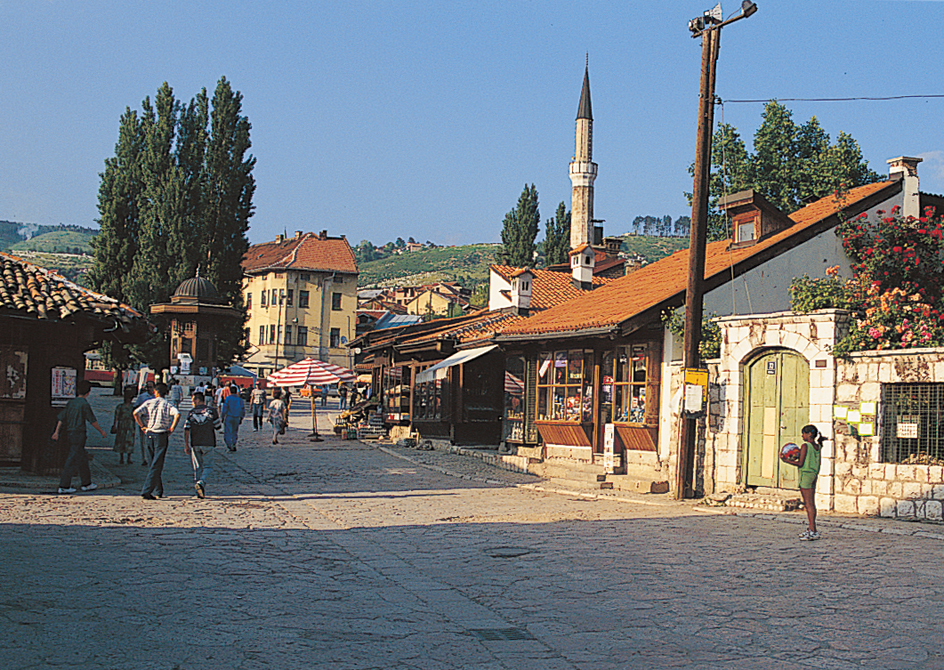
In June 1914, Archduke Franz Ferdinand of Austria-Hungary was assassinated in Sarajevo by Gavrilo Princip, a Serbian from Bosnia-Herzegovina. The assassination led to the outbreak of World War I. After the war ended in 1918, Bosnia-Herzegovina became part of the new Kingdom of the Serbs, Croats, and Slovenes. The kingdom was renamed Yugoslavia in 1929. 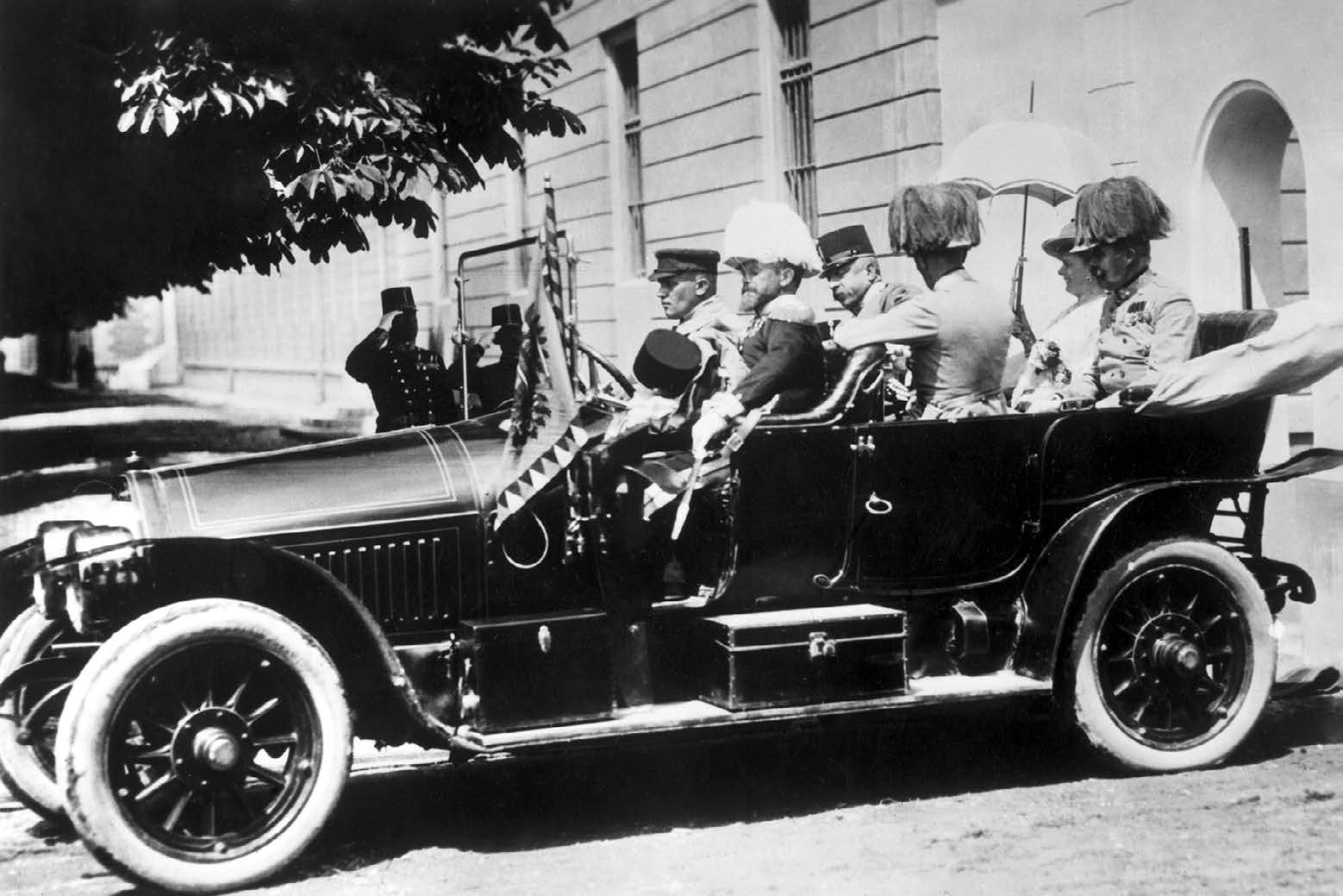
Communist rule.
During World War II (1939-1945), the Axis powers led by Germany and Italy occupied Yugoslavia. Croatia briefly became a supposedly independent state, but it was actually controlled by Germany. Bosnia-Herzegovina was placed under Croatia’s control. After the war ended, Communists came to power in Yugoslavia. Under a constitution passed in 1946, Yugoslavia was organized as a federal state—that is, one in which the powers of government were shared between a central government and republics. Bosnia-Herzegovina became one of the six republics of Yugoslavia, as did Croatia. 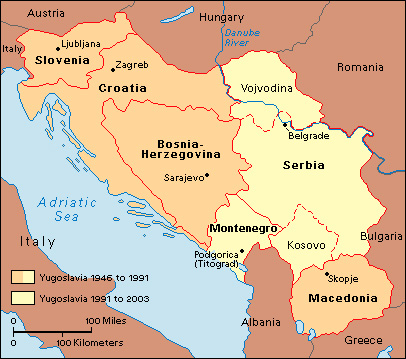
During the period when Communists ruled Yugoslavia, the republic of Bosnia-Herzegovina was sometimes classified as a less-developed region. This classification enabled it to receive federal funds for economic development. But some regions remained very poor.
Bosnia-Herzegovina has long been a site of conflict because of the cultural and religious differences between its ethnic groups. In the late 1980’s, relations between the groups steadily worsened, especially between Serbs and non-Serbs.
In 1990, the Communist Party gave up its monopoly on power in Yugoslavia, and political parties began to form. That year, Bosnia held free elections for the first time. Non-Communists won control of the legislature.
Independence and war.
In June 1991, Yugoslavia began to break apart after both Croatia and Slovenia declared their independence. In February and March 1992, a referendum on independence was held in Bosnia-Herzegovina. Most Serbs boycotted the referendum, but a majority of the population voted for independence. Bosnia-Herzegovina then declared its independence. 
Many Serbs living in Bosnia-Herzegovina opposed the declaration of independence and began a war against non-Serbs. They were aided by the Yugoslav army, which was controlled by Serbs. About two-thirds of Bosnia fell to Serbian forces within two months. The Serbs sought to remove all non-Serbs from the territory they claimed, killing some and forcing others to move. This policy was called ethnic cleansing.
In April 1992, Serbia and Montenegro formed a smaller Yugoslavia. (They separated into independent countries in 2006.) The new Yugoslavia provided troops and equipment to the Serbs fighting in Bosnia-Herzegovina. In May, the United Nations (UN) imposed an oil and trade embargo against Yugoslavia in an attempt to end the war.
Troops fighting against the Serbs in Bosnia included Bosniaks and Bosnian Croats. As the war continued, Bosnian Croatian forces, supported by Croatia, gained control of about one-fifth of the country. In July 1992, some Bosnian Croats began to call for independence for the Croatian areas.
In mid-1992, reports began coming out of Bosnia that Bosnian Serbs had tortured and killed Bosniak and Croatian civilians being held in detention camps. In October, the United Nations established a war-crimes commission to investigate these charges and other reported incidents of human-rights abuses.
Also in October, fighting broke out between Bosnian Croats and Bosniaks. The fighting increased in 1993. But in February 1994, the two sides signed a cease-fire agreement. In March, they agreed to form a joint federation. The Bosnian Serbs continued fighting, however, and they refused to consider an international peace plan that was proposed in mid-1994.
The Dayton peace plan.
In late 1995, representatives of Bosnia, Croatia, and Serbia agreed to meet for peace negotiations. The negotiations took place in the United States, in Dayton, Ohio. A peace plan signed in December called for dividing Bosnia into two parts—one part under the control of a Bosniak-Croat federation and the other part ruled by Bosnian Serbs. The Bosniak-Croat federation would have control of 51 percent of the country, and the Bosnian Serbs would control the other 49 percent.
The Dayton peace plan called for free elections, which were held in September 1996. Bosnian voters elected a three-member national presidency and also elected members of a national legislature. The Bosniak-Croat federation and the Bosnian Serb republic each elected a regional presidency and a regional legislature. An international overseer was assigned to help implement the peace plan. The overseer was given broad powers to regulate the government to help ensure its success.
The Dayton peace plan called for an end to acts of terrorism and violence, the surrender of war criminals to international authorities, guarantees that refugees could return to their homes, and free movement throughout Bosnia. The plan also called for a cease-fire to be policed by troops of the North Atlantic Treaty Organization (NATO). The NATO force, along with an international police force, was charged with protecting civilians, arresting war criminals, and identifying the dead.
However, Bosnia’s ethnic groups remained divided, and hostilities continued. Movement throughout the country continued to be restricted. Many refugees were unable to return to their homes or afraid to do so. A number of war criminals were tried and convicted by an international court established by the United Nations Security Council, but other war criminals remained at large.
Recent developments.
In the early 2000’s, Bosnia struggled to repair the damage done by the war. The country’s poor economy led to problems with unemployment and organized crime. Ethnic strife and mistrust remained widespread. Nationalist parties, which sought power for individual ethnic groups, and reformist parties, which sought to unite the country’s ethnic groups, traded control of the government. Some Bosnian Croats and Serbs still hoped to create their own states within Bosnia, in violation of the Dayton peace plan. In 2004, thousands of troops from the European Union Force (EUFOR) took over peacekeeping duties from NATO. As of the early 2020’s, more than 1,000 EUFOR troops remained in Bosnia.
